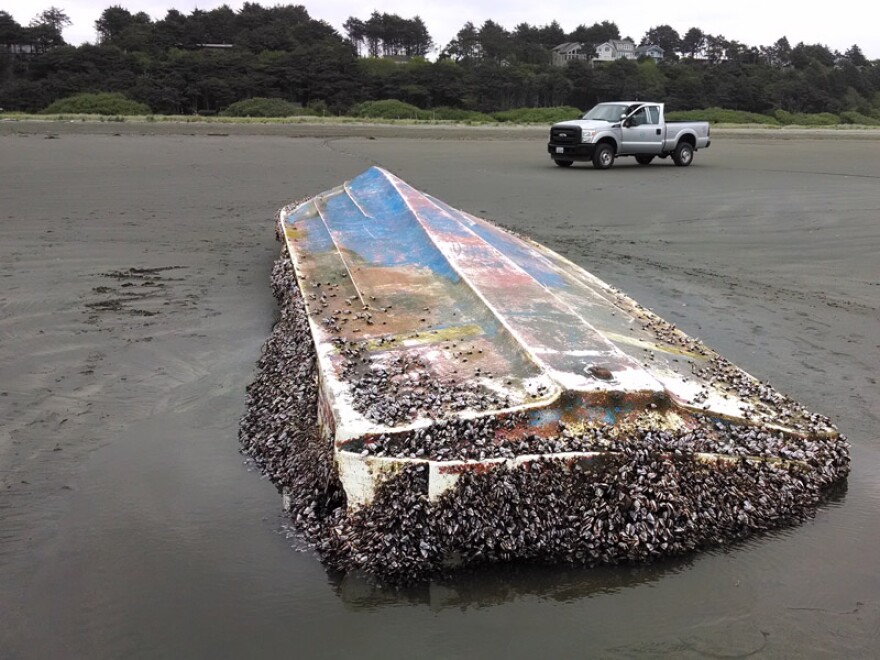A new wave of suspected debris from the devastating 2011 earthquake and tsunami in Japan is washing up on Northwest shores. The latest noteworthy object to arrive, a large skiff coated with sea life, was found Thursday near Moclips, Washington.
The new arrival resembles earlier derelict boats that were confirmed through markings as lost in the tsunami. West winds have pushed a whole bunch of new suspected tsunami flotsam ashore. Four other Japanese-style, fiberglass skiffs washed up over the Memorial Day weekend at Long Beach and near Ocean Shores, Washington. At least five more beached over the past month along the Oregon coast.
Allen Pleus, the aquatic invasive species coordinator at Washington's Department of Fish & Wildlife, said each brings a rapid response.
"Invasive species or coastal species could survive the transit from one side of the Pacific Ocean to the other," Pleus said. "The ones that are surviving this long are typically the highest risk, the ones that have the most potential to become invasive in our waters."
Pleus said so far it is unclear if any unwanted sea creatures that hitchhiked over here on tsunami debris have established new colonies.
Pleus' counterpart at the Oregon Department of Fish and Wildlife, Steve Rumrill, said park rangers attempt to remove the weathered boats from the beach within a day to minimize the risk to the local environment and passersby.
As park staff and biologists scrape off the cloak of barnacles, seaweed and mussels, they look for a boat name, registration or serial number. That can be passed on to the Japanese Consulate, which then tries to locate an owner to determine when the vessel was lost.

"It seems like the debris that we were all expecting to come in last year and perhaps the year before is making its way in now," commented Washington State Parks spokeswoman Virginia Painter.
Washington Department of Ecology spokeswoman Linda Kent added, "We’ve also had an uptick in hazardous marine debris items like cylinders and canisters. People should use caution if they come across such items, not touch them and let experts remove them."
Experts at the National Oceanic and Atmospheric Administration believe debris from the 2011 Japanese disaster will continue to wash up on our shores for at least a couple more years.
NOAA's marine debris specialists remind that flotsam from the 2011 tsunami makes up only a small percentage of the trash in the Pacific Ocean. Very little of the possible tsunami debris that has washed up on Pacific Northwest beaches can be definitively traced back to its source because it lacks personal or location-specific markings.
In general, beachcombers should report large debris that appears to be related to the tsunami to: DisasterDebris@noaa.gov. Objects that may be hazardous should be called in to a state hotline. In Washington the number is 1-800-OILS-911. In Oregon it's 2-1-1. You can also call the U.S. Coast Guard.


